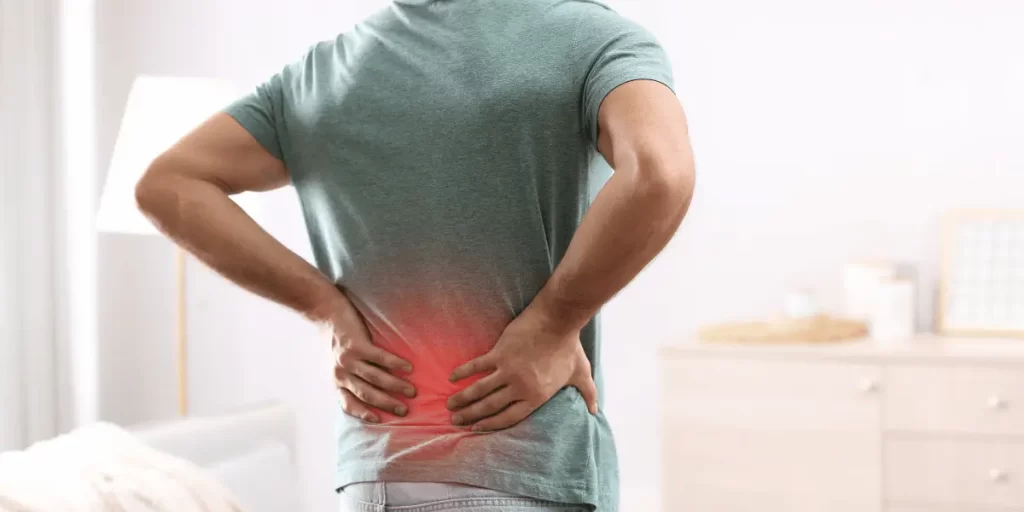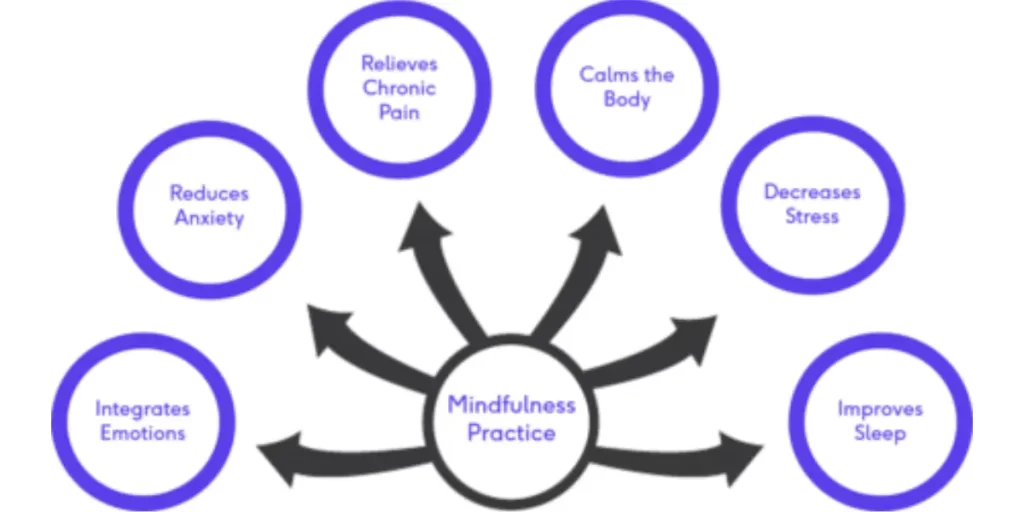Pain paralyzes you and confuses those around you. Approaches to dealing with the experience of pain may bring temporary relief. Alternatively, we have mindfulness meditation for pain management. This tool not only helps you find relief but improves your whole life. But how can they do that? We shall be looking at that soon.
Chronic Pain: Definition and Role it Plays on One’s Life

Let us start with pain – this is your body’s response to damage. pain could be mild or severe. Then, we have chronic pain. Chronic pain is pain that persists way beyond the usual recovery period. Chronic pain affects nearly all parts of the body and alters how your life works.
It may come in the form of fibromyalgia or arthritis. It may also come from he form of depression and anxiety. It may even last for more than months. It is seen as a major medical condition that needs to be tackled.
Startling Statistics on Chronic Pain
10% of the people in the world are living with pain. As a matter of fact, the rate at which chronic pain conditions occur increases gradually. Primary healthcare centers around the world say that they have patients who report cases of chronic pain.
Learn about the Physical and Emotional Toll Caused by Chronic Pain
Dealing with chronic pain can drain you. Those who do can testify that it is a constant battle that affect every part of their life. They may have feelings of isolation or loss of identity as they cannot do the things they enjoy and are known for.
Chronic pain also creates the fear and worry of the future. It creates negative emotions like anger and frustration.
Meditation – A Natural Painkiller

There is no argument here that medications and other traditional approaches can treat pain. But have you tried the practice of meditation for pain management? Alternative approaches like this one can reduce pain and change your life forever.
Learn How Meditation can be used to Manage Chronic Pain
Meditation can activate the good hormones found in the human body. An example of these hormones is Endorphin. Endorphins are good hormones that makes you feel good and pleasant. When they are released, they can reduce your stress levels and help you deal with depression.
Meditation also lowers cortisol. Cortisol causes inflammation and can lead to several problems. Thanks to meditation, it can take away the pain.
Scientific Evidence: Meditation and Pain Relief
Science has backed up the claim that meditation is good for pain management. It says that meditation can change the structure of the brain. It can also affect how the brain functions. Thus, meditators have higher pain tolerance than those who do not meditate.
In addition, it has been reported that meditation reduces pain by modifying expectations and nature of the experience. It also prepares the body for an emotional response.
Types of Meditation for Chronic Pain Management

Now is the time for us to focus on the types of meditation that helps relieve chronic pain. Believe us when we say that these tools can help you successfully navigate through the emotional and physical pains you may have encountered.
Mindfulness and Pain Relief
This kind of meditation is concerned with bringing your focus to your breath so that you can be engaged in the here and now. It encourages you to observe your emotions or any other thing you experience without biases or judgments. This technique, indeed, can help manage chronic pain.
This is one of the most common and simplest kind of meditation to do. You can practice mindfulness meditation yourself or do it with a guide.
Guided Meditation: A Beginner’s Helping Hand
If you are scared about meditating alone, welcome to guided meditation. This kind of meditation involves being led by someone who is experienced. This seasoned practitioner can take your focus away from the pain and help your body and mind to relax. The farther your mind is from the pain, the better for you.
Being guided on the meditation practice will help distract you from the discomfort and pain you’re feeling. Asides from a human guide, apps, books and audio recordings are also available to help you. When you go online, you can find free 5-minute guided meditation transcript and start using it right away.
Body Scan Meditation: Reconnecting with Your Body
Performing a body scan means analyzing your whole body in order to identify and release tension in their parts. This kind of meditation helps those coping with chronic pain to do so successfully. You can do this either by lying or sitting down.
Unravel the Effects of Mindfulness Meditation on Pain

To put simply, mindfulness is being present in the moment without paying attention to your thoughts. This concept has been employed in the medical field to help people cope with their plenty problems like stress and pain.
Chronic pain is one thing that people pass through after a serious injury. This can leave them feeling anxious, frustrated and stressed. However, mindfulness has been shown to help with that situation.
Understand How Mindfulness Meditation Slows Down Pain Perception
Mindfulness meditation interrupts communication between the areas in the brain that perceive pain. When you meditate, pain signals move to the brain but the person does not feel like he is experiencing it or he owns it. Thus, the pain is reduced. That is to say, by practicing mindfulness, you train yourself to detach from sensations.
Mindfulness Meditation for Pain Management – The Techniques
Mindfulness meditation techniques are classified under non-pharmaceutical method of treatment. These techniques teach us that we can observe thoughts without accepting or rejecting them.
Mindfulness techniques are based on detached observation. That is to say, physical pain is extracted from experiences of emotional pain. The good thing is these techniques for pain leaves an individual with no side effects.
The Meditation Techniques to Bring Chronic Pain Relief

Let us now visit some of the techniques of meditation to relieve pain.
Progressive Muscle Relaxation – Relax Your Muscles
This technique mentioned above relaxes the different muscles in the body. It releases built-up tension and promotes relaxation response which is why people consider it helpful for pain-related symptoms. This practice is simple and can be integrated into daily routine.
This practice involves focusing on the different muscle groups in your body, from your feet to the head. You are expected to tighten up the muscles for a few seconds, then you release them and let them relax completely. Notice the relaxation felt as they are released.
Breathing Exercises: Calming the Mind, Easing the Body
Breathing exercises can make you relax and ultimately reduce pain. If you are already in the habit of mindful breathing, then that’s excellent. But if you’re not, it’s not too late to go into the practice. There are different ones you can try – deep breathing, box breathing and mindful breathing. Breathwork meditation solely involves focusing on your breath and even changing your breathing patterns so that it can promote relaxation for you.
Teach your body to relax and find ease when you breathe deeply. This will make it efficient to do so when you want to use it to reduce pain.
Visualization Meditation: Transforming Pain Through Guided Imagery
The mind cannot differentiate between visualizing something and actually doing it. This is why visualization is effective. To do this, you need to imagine a quiet, safe and serene place or situation – any place that can make you feel calm and relaxed. The practice of visualization can shift your mind away from the pain.
There are facts to support that. In a study conducted in 2015, people with fibromyalgia were observed after visualization. Interestingly, they had reduced pain and depression levels.
The Science of Meditation for Pain Relief

Scientific discoveries and research show that meditation can relieve pain even more than standard treatments. It says that meditation may lower pain sensitivity in those who practice it than others. Furthermore, it reduces activity in the default mode network.
The default mode network is made up of the brain areas that are active in resting state. So, when activity in these areas are reduces, meditators experience less pain.
Success Stories: Real People, Real Pain Relief

We will now turn our attention to testimonials from people who have discovered that meditation can be beneficial for pain management. Their real, inspiring stories teach that meditation can work for you too.
Inspiring Testimonials from Meditation Practitioners
Eric – I had chronic pancreatitis and it made my pain difficult. This was one of the biggest if not the biggest challenge in my life. True, I can still do the things I want. I work full time and I don’t get to the hospitalized often. However, I suffer from chronic pain that makes me frustrated. I knew meditation wouldn’t miraculously end the pain. I went ahead to try it. And guess what? It helped me manage the pain effectively. It taught me pain control. Now, I make use of meditation when my pain is at its worst.
Jacquie – I started experiencing chronic pain when I was very young. By the time I was 30, When I could only sleep for two hours and it was tough. Did you know that I tried different approach to pain? Anyways, I used meditation and mindfulness; it was a relief. Now, I practice it with some gentle music to ease my mind. I also practice loving-kindness meditation, letting go of any grudge in my heart.
Getting Started: Tips for Beginners

If you know you are starting meditation for the first time, it is important to see it as something that requires patience. It takes time and strength to perfect it and benefit from it. With the following tips, you can reap the benefit in no time.
Finding the Right Meditation Teacher or App
If you are a beginner, finding someone like a teacher or being guided by an app will be helpful. It will give you extra motivation and accountability. It will also make the practice interesting for you. Meditation teachers can be gotten at local centers or online. You can find recommended meditation apps online like Headspace and Calm. These contain helpful meditation and mindfulness exercises that can help manage pain.
Creating a Conducive Environment for Meditation
You don’t need to have a fully mapped out meditation room before you get into work. Just something cozy and comfortable can help you relax. It is vital that you limit distractions and take it seriously. So, set a reminder and when it’s time to practice, practice!
Consistency is Key: Making Meditation a Daily Habit
Remember, no champion is born a champion. Hard work, determination and commitment made them up. The same is true for you. With consistent training and consistency, you will find it easier to meditate and to stick to it.
Integrating Meditation into Your Pain Management Plan

We’ve cooked up mind-blowing tips to help you successfully integrate meditation into your pain management plan. Here we go.
Working with Your Healthcare Provider
If you have a healthcare provider, then it is advisable that you work with them. They offer mindfulness-based meditation programs. They even offer techniques like massage, acupuncture, and even nutritional services. They also decide which types of meditation to explore and which you shouldn’t.
Explore Other Complementary Therapies
Meditation doesn’t have to be boring, okay? Try other ones if you think you are not getting the most of the current one you are doing. You can benefit from mindfulness interventions founded by Jon Kabat-Zinn.
We also have the sound healing, aromatherapy, tai chi and nature immersion.
Successfully Incorporate Mindfulness and Meditation into Your Life
When you pair up mindfulness with your daily activities, it eases your meditation practice. So, the next time you want to engage in that basic routine of yours, do well to add meditation. Daily routines like brushing, bathing, cooking, eating, walking, and others serve as reminders to always get into the mood of meditating.
Meditation Statistics and Facts
It is a known fat that meditation and cognitive-behavioral therapy are effective. Both of them serve as aids for chronic pain relief. As a matter of fact, meditation can be used to reduce pain intensity by 40%.
In the United States, about 20% of adults including older ones, experience chronic pain. However, participants in the mindfulness-based stress reduction program were reported to be able to cope with chronic pain. This is proof that meditation practice improves pain perception.
Table: Common Types of Chronic Pain and How Meditation Can Help
| Types of Chronic Pain | How Meditation Can Help |
| Back Pain | Reduce muscle tension, improve posture |
| Arthritis | Decrease Inflammation, increase joint flexibility |
| Migraine | Manage stress, including pain, and improve sleep quality |
| Fibromyalgia | Increase pain tolerance, reduce fatigue |
| Nerve damage from diabetes | Manage symptoms like burning or tingling. |
| Irritable bowel | Reduce severity of pain and manage stress and anxiety |
Frequently Asked Questions(FAQ’s)
You can call it mindfulness meditation.
You can try meditation. Of course, there are plenty of them so find the right one for you. Also, move yourself, sleep well and seek medical help. Be careful not to indulge in harmful substances like drinking or smoking.
Engage in mindfulness meditation to limit pain sensation. It is not out of place to seek professional help if meditation is not working.
i. analgesia ii. activity iii. adverse effects iv. aberrant behaviors v. affect
You can take medications, physical therapies or seek the help of a medical personnel.
Studies show that meditation is even more effective than morphine.
There are different kinds – mindfulness meditation, transcendental meditation, body scan and visualization.
This deals with imagining your pain going away. You are either thinking you are in a cool place or you are thinking you are doing something cool.
Yes, it is helpful for the management of chronic pain.
You can definitely use yoga for back pain relief. Poses like cat-cow, lotus and triangle may help relax muscles and ease back pain.



